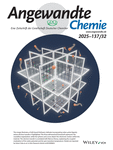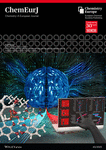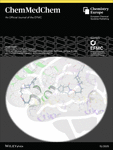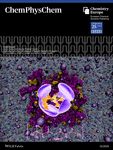Journal list menu
For full article and contact information, see Angew. Chem. Int. Ed. 1998, 37 (18), 2493 - 2496
Electrons with Warp-Tempo
Element 114 doesn't exist yet, but thanks to
computers scientists know how to handle it
As always, physicists are still trying to produce previously unknown elements in particle accelerators. However, before they are produced, the scientists should first know all about the chemical properties of the new atoms. Only then will they be able to isolate them and tune in their detection procedure correctly. Peter Schwerdtfeger and Michael Seth of Auckland University, New Zealand, and Knut Faegri of Oslo University let a supercomputer do research on the chemical behaviour of the still unknown element 114 ("Eka-Lead"). Their result: in contrast to many other synthetic elements, Eka-Lead probably cannot be isolated as a gas, but only as a water-soluble fluoro compound.
Though the computer design of whole molecules has become routine for chemists by now, the calculation of single, heavy atoms still forces scientists to rack their brains. The reason for this is an effect one had probably rather expected in space, namely, that close to the highly charged atomic nuclei of these elements the electrons are moving with almost the speed of light. Because of this, they become clearly heavier and circle in smaller orbits than usual. In addition, the prediction of the chemical properties is a hard nut to crack in such atoms because of the high number of electrons that determine them: in the case of Eka-Lead there are 114 of them, and they all influence each other. These effects make it very difficult to apply the simplifications and approximations used in the calculations of light atoms and small molecules to heavy elements.
Even fast PCs can't cope with such an electron mobile: in Schwerdtfeger's lab a supercomputer with 16 parallel work processors, a main memory of 8 Gigabyte and a hard disk of 20 Gigabyte needed half a year to predict at least some basic reactions of element 114. This showed that in contrast to carbon or silicon, to which Eka-Lead is chemically related this element wouldn't (as hoped) form compounds with four atoms of the element fluorine, which could be collected as a gas. Instead, these molecules would fall apart into a compound with two fluorine atoms, which would be structurally similar to water and would be readily soluble in it. Thanks to the early warning, the scientists can now at least prepare their high-tech retorts for this new, water-soluble compound.






































